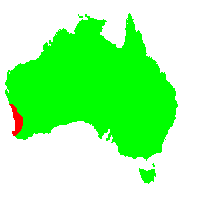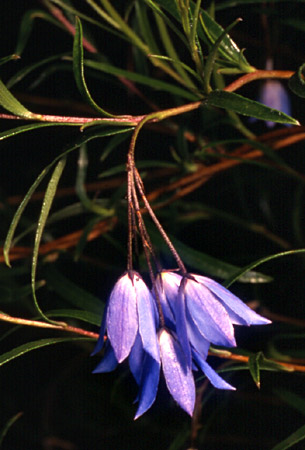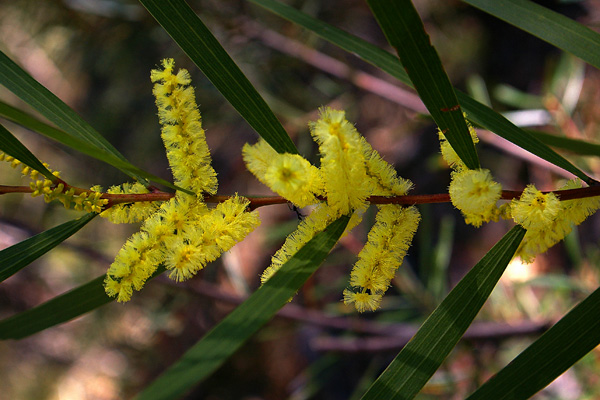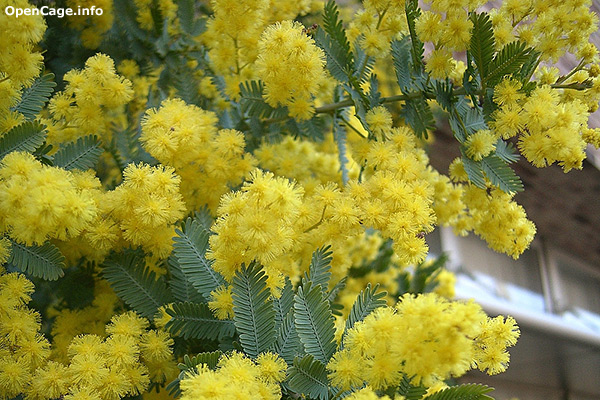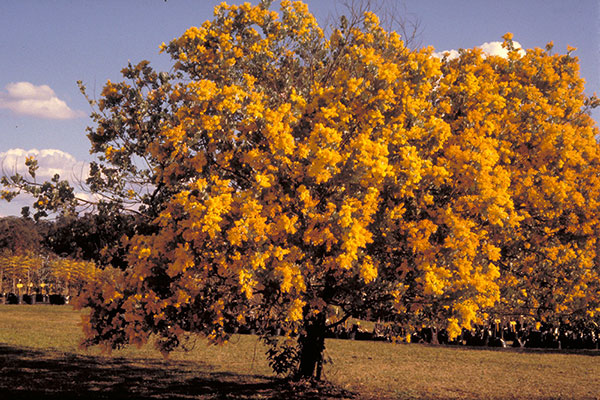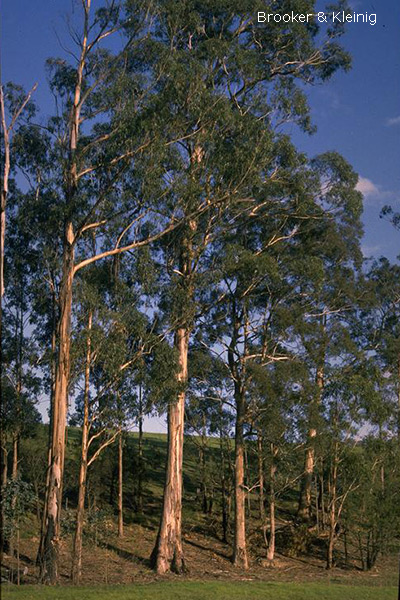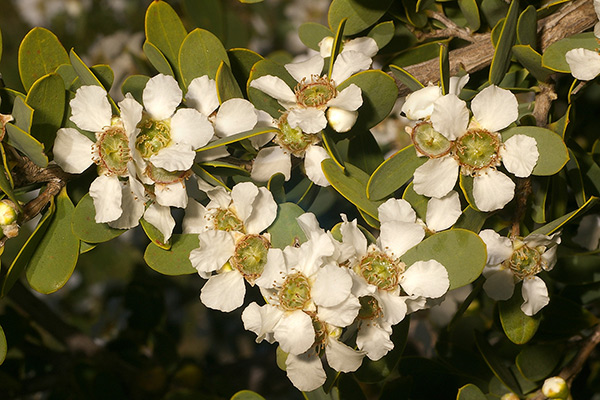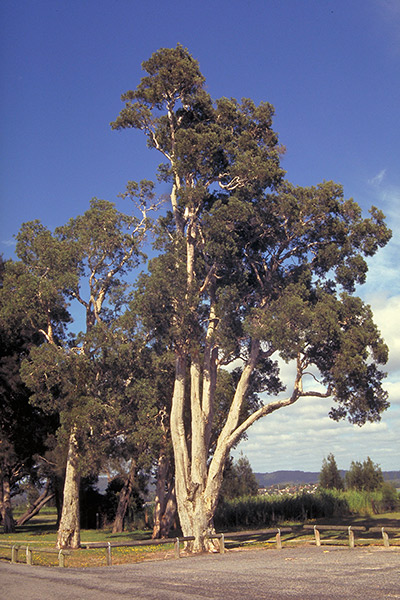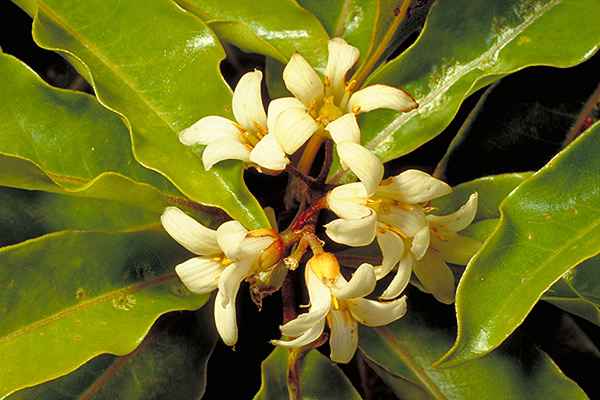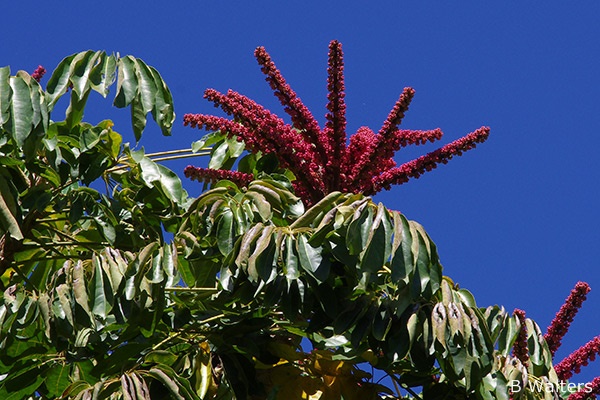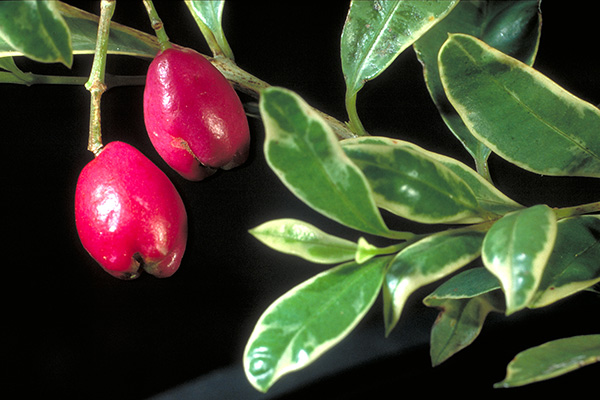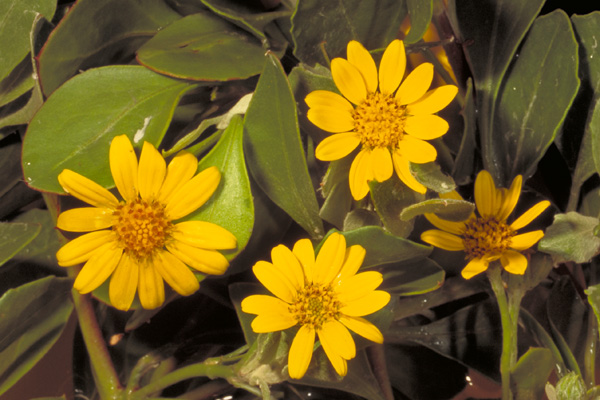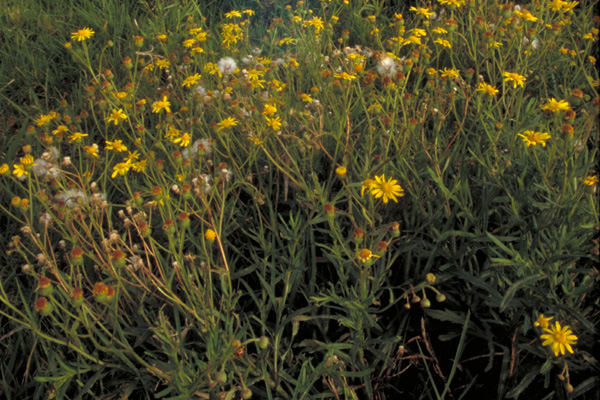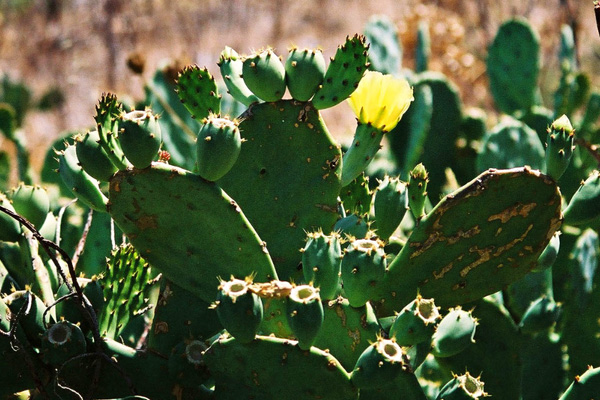General Description:
The plant family Ericaceae (heaths and heathers) is widespread in many parts of the globe, particularly Europe and South Africa. It contains a number of widely cultivated plants such as Erica, Rhododendron and Pieris.
Like most of Australia’s members of the Ericaceae, Conostephium belongs to the subfamily Epacridoideae, which was formerly classified as a separate family, the Epacridaceae. Conostephium consists of about 10-12 species of small shrubs, all of which are endemic to the southern part of Western Australia. Previously one species (Conostephium halmaturinum) was listed for Kangaroo Island (South Australia) but this has been reclassified as Leucopogon woodsii. Conostephium occurs in open forests, woodlands and heaths and its closest relative is Astroloma.
Conostephium pendulum is a low, spreading shrub up to about 1 metre high (usually less). The leaves are oblong in shape with a pungent point. They are about 25 mm long with recurved margins. The cream, red-tipped flowers are tubular in shape and 10-12 mm long, tapering to a point with the style protruding from the tip. They occur on pendulous stalks from the leaf axils and are seen from late autumn to spring.
Conostephium, generally, are not well known in cultivation and there is little available information on the conditions required to grown them successfully. C.pendulum is likely to be best suited to a temperate, Mediterranean climate in well drained, sandy soils and in a semi shaded to sunny position. There may be some potential for cultivation in a container.
Propagation of C.pendulum would probably be best from cuttings of current season’s growth as seed is unlikely to be available. The roots of most members of the Ericaceae are very fine and easily damaged during transplanting of cuttings. Because of this, cuttings are best placed into individual small pots or tubes to minimise root disturbance. For further information on propagation of members of the Ericaceae see Epacrids from Cuttings.
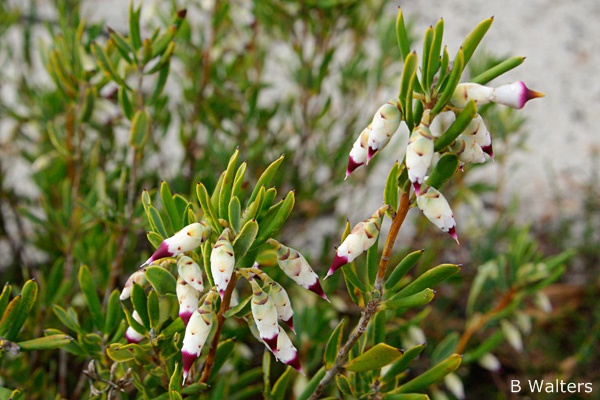
Conostephium pendulum
Photo: Brian Walters
 Australian Native Plants Society (Australia)
Australian Native Plants Society (Australia)